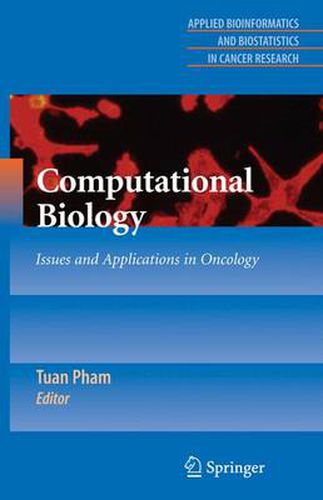Readings Newsletter
Become a Readings Member to make your shopping experience even easier.
Sign in or sign up for free!
You’re not far away from qualifying for FREE standard shipping within Australia
You’ve qualified for FREE standard shipping within Australia
The cart is loading…






This title is printed to order. This book may have been self-published. If so, we cannot guarantee the quality of the content. In the main most books will have gone through the editing process however some may not. We therefore suggest that you be aware of this before ordering this book. If in doubt check either the author or publisher’s details as we are unable to accept any returns unless they are faulty. Please contact us if you have any questions.
Computational biology is an interdisciplinary research that applies approaches and methodologies of information sciences and engineering to address complex pr- lems in biology. With rapid developments in the omics and computer technologies over the past decade, computational biology has been evolving to cover a much wider research domain and applications in order to adequately address challenging problems in systems biology and medicine. This edited book focuses on recent - sues and applications of computational biology in oncology. This book contains 11 chapters that cover diverse advanced computationalmethods applied to oncologyin an attempt to ?nd more effective ways for the diagnosis and cure of cancer. Chapter 1 by Chen and Nguyen addresses an analysis of cancer genomics data using partial least squares weights for identifying relevant genes, which are useful for follow-up validations. In Chap. 2, Zhao and Yan report an interesting biclust- ing method for microarray data analysis, which can handle the case when only a subset of genes coregulates under a subset of conditions and appears to be a novel technique for classifying cancer tissues. As another computational method for - croarray data analysis, the work by Le Cao and McLachlan in Chap. 3 discusses the dif?culties encountered when dealing with microarray data subjected to sel- tion bias, multiclass, and unbalanced problems, which can be overcome by careful selection of gene expression pro?les. Novel methods presented in these chapters can be applied for developing diagnostic tests and therapeutic treatments for cancer patients.
$9.00 standard shipping within Australia
FREE standard shipping within Australia for orders over $100.00
Express & International shipping calculated at checkout
This title is printed to order. This book may have been self-published. If so, we cannot guarantee the quality of the content. In the main most books will have gone through the editing process however some may not. We therefore suggest that you be aware of this before ordering this book. If in doubt check either the author or publisher’s details as we are unable to accept any returns unless they are faulty. Please contact us if you have any questions.
Computational biology is an interdisciplinary research that applies approaches and methodologies of information sciences and engineering to address complex pr- lems in biology. With rapid developments in the omics and computer technologies over the past decade, computational biology has been evolving to cover a much wider research domain and applications in order to adequately address challenging problems in systems biology and medicine. This edited book focuses on recent - sues and applications of computational biology in oncology. This book contains 11 chapters that cover diverse advanced computationalmethods applied to oncologyin an attempt to ?nd more effective ways for the diagnosis and cure of cancer. Chapter 1 by Chen and Nguyen addresses an analysis of cancer genomics data using partial least squares weights for identifying relevant genes, which are useful for follow-up validations. In Chap. 2, Zhao and Yan report an interesting biclust- ing method for microarray data analysis, which can handle the case when only a subset of genes coregulates under a subset of conditions and appears to be a novel technique for classifying cancer tissues. As another computational method for - croarray data analysis, the work by Le Cao and McLachlan in Chap. 3 discusses the dif?culties encountered when dealing with microarray data subjected to sel- tion bias, multiclass, and unbalanced problems, which can be overcome by careful selection of gene expression pro?les. Novel methods presented in these chapters can be applied for developing diagnostic tests and therapeutic treatments for cancer patients.